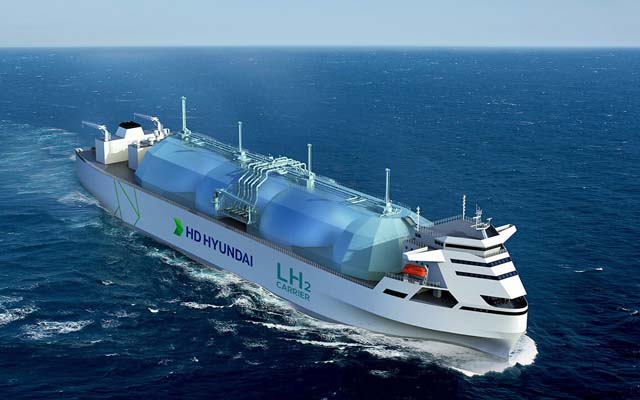Mitsui OSK Lines (MOL), Australian energy company Woodside Energy, shipbuilding and engineering company HD Korea Shipbuilding and Offshore Engineering (HD KSOE) and shipping company Hyundai Glovis have signed a non-binding memorandum of understanding (MoU) to jointly study the development of shipping solutions to enable bulk marine transportation of liquid hydrogen, which the companies have been pursuing since 2022.
Hydrogen, as a low-carbon energy source, is attracting a great deal of attention as the world seeks to move toward decarbonisation. Demand for the transport of liquefied hydrogen is expected to rise in the coming decades. In this project, the participating companies will study the technology, safety, construction, operation, and economics of a carrier with 80,000m3 tank capacity, with the aim of establishing a liquefied hydrogen supply chain in Asia and other regions. If a project results from the MoU, the parties’ aspiration is to have the vessel built and in operation by 2030. The liquefied hydrogen carrier would, under its concept design, use hydrogen as its main fuel, which is anticipated to significantly reduce CO2 emissions during operation.
Liquefied hydrogen takes up about 1/800th the volume of hydrogen gas. While liquefied hydrogen is non-toxic and can be transported safely and efficiently, it must be cooled to -253°C, which requires advanced technology. Woodside, HD KSOE, and Hyundai Glovis have evaluated MOL’s experience gained through decades of experience in transporting LNG and its various efforts to address decarbonisation issues, and approached the company to cooperate in this study, leading to the conclusion of the MoU.
Discussions between the parties contemplate that, if a project results from the MoU, Woodside would be responsible for producing hydrogen and storing it at loading and discharging ports, HD KSOE would design and build the vessel, and Hyundai Glovis and MOL would be responsible for providing ship operational input into the vessel design, including logistics, propulsion, storage and cargo handling.
Image: CG rendering of the liquefied H2 carrier (credit: HD KSOE)



